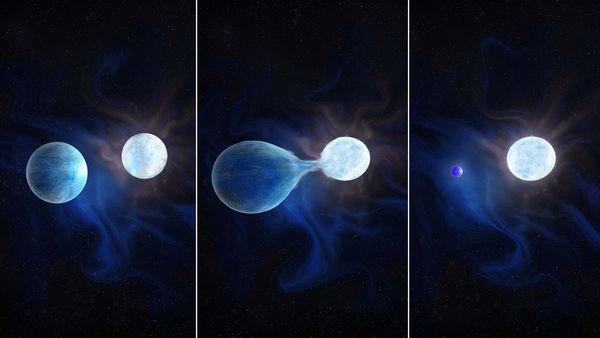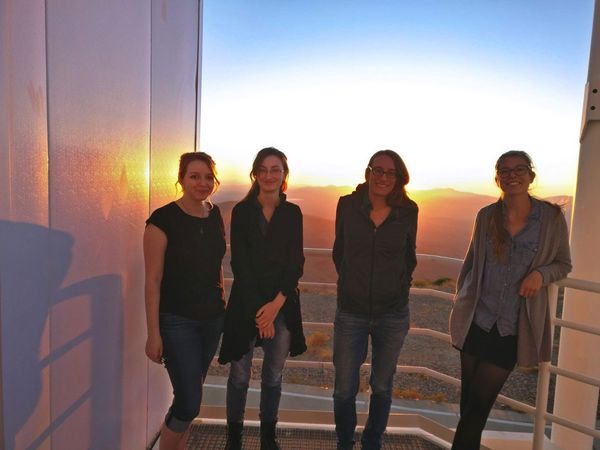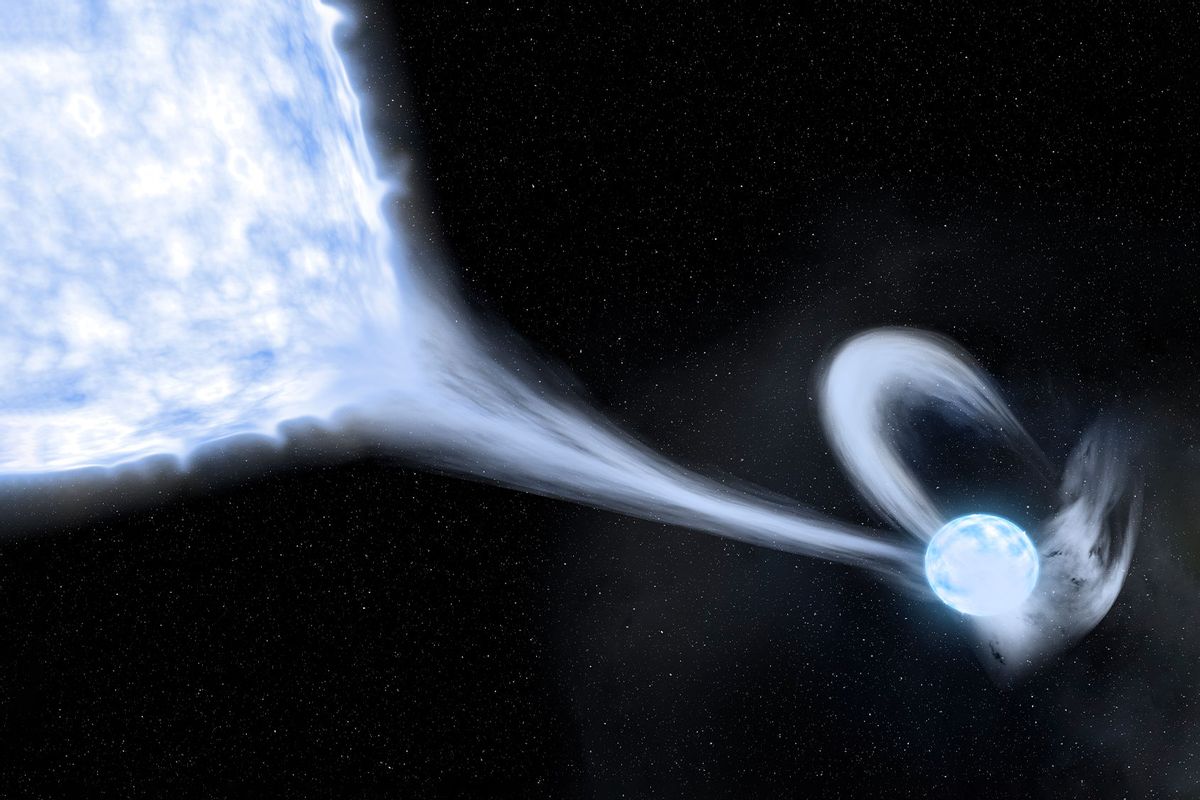Supernovae are rare events, yet they are critical to the inner workings of our universe and even our own biological makeup. The calcium that makes up our teeth and bones originated from these massively fascinating events, which are the final moments of dying stars. As the late Carl Sagan famously said in an episode of Cosmos: "The lives and deaths of the stars seem impossibly remote from the human experience, and yet we're related in the most intimate way to their life cycles." Despite this, there remains a lot of mystery around these super-powerful explosions that shape our world and universe.
To date, scientists have felt confident that two basic types of supernovae exist which are each characterized by their presence of hydrogen. But for decades, astrophysicists have been perplexed by the fact that there are more “hydrogen-poor supernovae” than science could explain, in part because they hadn’t been able to identify the missing original star population behind these events. The perplexing mystery, and unexplainable phenomenon, put the theoretical models at risk for being inaccurate.
“Being hydrogen-poor indicates that the precursor star must have lost its thick hydrogen-rich envelope,” said Ylva Götberg, a new assistant professor at the Institute of Science and Technology Austria (ISTA) in a media statement. “This happens naturally in a third of all massive stars through envelope stripping by a binary companion star.”
 This artist's impression shows how hot, brilliant and high-mass stars evolve. The more massive brighter star expands first, until the outer layers start to strongly feel the gravitational pull of the companion. (Navid Marvi, courtesy of the Carnegie Institution for Science)
This artist's impression shows how hot, brilliant and high-mass stars evolve. The more massive brighter star expands first, until the outer layers start to strongly feel the gravitational pull of the companion. (Navid Marvi, courtesy of the Carnegie Institution for Science)
“What we showed is that we just weren't looking in the right way before. They were hiding in plain sight."
If they were so common, where were these stars located that evolved into hydrogen-poor supernovae? This was a question that couldn’t be answered until now. Through a collaborative effort, Götberg and Maria Drout, a faculty member at Dunlap Institute for Astronomy & Astrophysics at the University of Toronto in Canada, have documented a first-of-its-kind star population as the mysterious stars behind hydrogen-poor supernovae. Their findings were published in the journal Science.
Want more health and science stories in your inbox? Subscribe to Salon's weekly newsletter Lab Notes.
Described as "intermediate mass helium stars stripped through binary interaction," the scientists found 25 stars that fit the profile located in two neighboring galaxies, the Large and the Small Magellanic Clouds. The astronomers long believed that these stars will eventually explode as hydrogen-poor supernovae, and are necessary to form neutron star mergers — the kind that can emit massive gravitational waves that are detected by the LIGO experiment.
“What we showed is that we just weren't looking in the right way before,” Drout told Salon in a phone interview. “They were hiding in plain sight, as it turned out.”
Astronomers have theorized that massive stars evolve to become red giants. At some point, the outer edges of hydrogen are stripped away by the gravitational pull of its companion companion star, as most massive stars have a partner star. As a result, its very hot helium-core is left exposed. This process can take up to hundreds of thousands of years. But these stars that have been stripped of their hydrogen have been difficult to find because the light they emit is outside the visible light spectrum. It’s likely that the light can be blocked by dust or outshone by their companion stars, too.
 Study authors Bethany Ludwig, Anna O’Grady, Maria Drout and Ylva Götberg observing on the Magellan telescopes at Las Campanas Observatory in Chile, where they gathered data for this research. (University of Toronto/Ylva Götberg)
Study authors Bethany Ludwig, Anna O’Grady, Maria Drout and Ylva Götberg observing on the Magellan telescopes at Las Campanas Observatory in Chile, where they gathered data for this research. (University of Toronto/Ylva Götberg)
The scientists relied on ultraviolet light and optical spectroscopy to discover the stars, which showed the pair had strong signatures of helium, confirming their outermost layers were helium and that their surfaces were very hot.
When asked to describe what these stars look like, Drout said to think of the “bluest blue” you can think of, a shade that is almost violet in color.
On Earth, when we think of stars, we think of bright white lights in the sky. This population of stars is different. When asked to describe what these stars look like, Drout said to think of the “bluest blue” you can think of, a shade that is almost violet in color.
"If you just looked at the dot it would look like an intense blue,” She said. “But they’re also very small, because it’s the core of this star, and so even though it was a massive star, and it's still decently heavy, it's a very tiny star compared to its companion.”
Drout said the biggest implication for astronomy regarding this finding is confirming that these stars exist, adding that people in astronomy were getting “quite nervous” about this mystery.
We need your help to stay independent
“The fact that all of our models from supernova to supermassive stars, even for the types of like neutron star mergers and black hole mergers that LIGO and VIRGO are seeing gravitational waves now, all of our models for understanding where those phenomena come from, say that a lot of stars should go through this binary stripping process,” she said. “Now this shows that these stars really do exist, they were just hidden before.”
Next, researchers will seek to better understand specific properties of these stars, like solar wind.
“Depending on how strong it is, that's going to affect things like how many neutron star mergers we get and what type of supernova you see,” she said. “Even how much ultraviolet light should be coming from distant galaxies that we're now finding with the James Webb Space Telescope.”

Shares